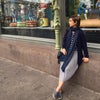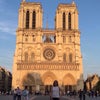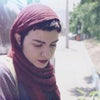Naghsh-e Jahan Square (Persian: ميدان نقش جهان maidaan-e naqsh-e jehaan), officially known as Imam Square (میدان امام), formerly known as Shah Square (میدان شاه), situated at the center of Isfahan city, Iran. It is an important historical site and one of UNESCO's World Heritage Sites.
The square is surrounded by buildings from the Safavid era.
The Shah Mosque is situated on the south side of this square. On the west side you can find Ali Qapu Palace. Sheikh Lotf Allah Mosque is situated on the eastern side of this square and the northern side opens into the Isfahan Grand Bazaar. Today, Namaaz-e Jom'eh (the Muslim Friday prayer) is held in this square in front of the Shah Mosque.
The square is depicted on the reverse of the Iranian 20,000 rials banknote.
Шаблон:Main on the eastern side of Naghsh-i Jahan Square, Sheikh Lotfallah Mosque was constructed between 1602 to 1619 A.D. in Shah Abbas (I)'s era. The monument's architect was Mohammadreza Isfahani. He solved the problem of the difference between the direction of kaabeh and gateway of the building by devising a connecting vestibule between the entrance and the enclosure.
The diameter of the inner dome is Шаблон:Convert laid on walls with the thickness of 170cm. One of the unique characteristics of the mosque is the peacock at the center of its dome. If you stand at the entrance gate of the inner hall and look at the center of the dome, a peacock whose tail is the sunrays came in from the hole in the ceiling could be seen. The mosque was named after Sheikh Lotfallah, a religious leader from what is now Lebanon who was invited to Isfahan and was paid special attention by the Safavid king.
Шаблон:Main palace, was the celebrated seat of the Safavid capital in Isfahan.]]
Ali Qapu (pronounced, ah-lee gah-pooh) is in effect but a pavilion that marks the entrance to the vast royal residential quarter of the Safavid Isfahan which stretched from the Maidan Naqsh-i-Jahan to the Chahar Bagh Boulevard. The name is made of two elements: "Ali", Arabic for exalted, and "Qapu" Turkic for portal or royal threshold. The compound stands for "Exalted Porte". This name was chosen by the Safavids to rival the Ottomans' celbrated name for their court : Bab-i Ali, or the "Sublime Porte"). The building, another wonderful Safavid edifice, was built by decree of Shah Abbas the Great in the early seventeenth century. It was here that the great monarch used to entertain noble visitors, and foreign ambassadors. Shah Abbas, here for the first time celebrated the Nowruz (New Year's Day) of 1006 AH / 1597 A.D. A large and massive rectangular structure, the Ali Qapu is Шаблон:Convert high and has six floors, fronted with a wide terrace whose ceiling is inlaid and supported by wooden columns.
Ali Qapu is rich in naturalistic wall paintings by Reza Abbassi, the court painter of Shah Abbas I, and his pupils. There are floral, animal, and bird motifs. The highly ornamented doors and windows of the palace have almost all been pillaged at times of social anarchy. Only one window on the third floor has escaped the ravages of time. Ali Qapu was repaired and restored substantially during the reign of Shah Sultan Hussein, the last Safavid ruler, but fell into a dreadful state of dilapidation again during the short reign of invading Afghans. under the Qajar Nasir al-Din shah's reign (1848-96), the Safavid cornices and floral tiles above the portal were replaced by tiles bearing inscriptions.
Shah Abbas II was enthusiastic about the embellishment and perfection of Ali Qapu. His chief contribution was given to the magnificent hall, constructured on the third floor. The 18 columns of the hall are covered with mirrors and its ceiling is decorated with great paintings.
The chancellery was stationed on the first floor.
On the sixth floor, the royal reception and banquets were held. The largest rooms are found on this floor. The stucco decoration of the banquet hall abounds in motif of various vessels and cups. The sixth floor was popularly called (the music room) as it was here that various ensembles performed music and sang songs. From the upper galleries, the Safavid ruler watched polo games, maneuvers and horse-racing below in the Naqsh-i-Jahan square.
The Ali Qapu has multiple connotations, but generally connotes entrance or supreme gate to the complex of palaces and public buildings of the Safavid Government.
The Ali Qapu building was founded in several stages, beginning from a building with a single gate, with entrance to the government building complex, and gradually developed, ending in the existing shape. The period of the development, with intervals lasted approximately seventy years.
First Stage : The initial building acting as entrance to the complex was in cubical shape and in two stories, with dimensions measuring Шаблон:Convert and Шаблон:Convert high.
Second Stage : Foundation of the upper hall, built on the entrance vestibule, with cubical shape, over the initial cubic shape structure with the same height in two visible stories.
Third Stage : Foundation of the fifth story, the music amphitheater or music hall, built on the lower hall, using the central room for sky light, and thus the vertical extension being emphasized.
Fourth Stage : Foundation of the eastern verandah or pavilion advancing towards the square, supported by the tower shaped building. By foundation of this verandah, the entrance vestibule was extended along the main gate and passage to the market, perpendicular to the eastern flank of the building.
Fifth Stage : Foundation of the wooden ceiling of the verandah, supported by 18 wooden columns, and contemporaneous with erection of the ceiling, an additional stairway of the southern flank was founded and was called the Kingly Stairway.
Sixth Stage : During this stage a water tower was built in the northern flank for provision of water for the copper pool of the columned verandah. Plaster decorations in reception story and music hall.
The room on the sixth floor is also decorated with plasterwork, representing pots and vessels and one is famous as the music and sound room. It is certainly well worth visiting for the cut out decorations round the room, which represent a considerable artistic feat. These cut out shapes were not placed there to act as cupboards: the stuccowork is most delicate and falls to pieces at the highest touch. So we conclude that it was placed in position in these rooms for ornament and decoration. The rooms were used for private parties and for the King's musicians, and these hollow places in the walls retained the echoes and produced the sounds of the singing and musical instruments clearly in all parts.
The decoration of the large room on the third floor which opens out on the large pillared hall, and which was used by Shah Abbas for entertaining his official guests is the most interesting. Fortunately the ceilings, on which birds are depicted in their natural colors, have remained without interference in their original state from Safavid times, and these are the best roofs in the building.
Imam Mosque is a mosque in Isfahan, Iran standing in south side
of Naghsh-i Jahan square. Built during the Safavid period, an
excellent example of Islamic Architecture in Persia(Iran). This
mosque has been constructed during the Safavid period, in 1611 with
seven-color mosaic tiles and valuable inscriptions. The portal of
the mosque measuring Шаблон:Convert high,
crowned with two minarets being
Шаблон:Convert in
height, frames the front of the mosque which opens into Naqsh-e
Jahan square. On top of the entrance, among the stalactites and
above the turquoise lattice window, there is a frame of seven-color
mosaic tile shaped like a vase with two peacocks on both
sides which is a example of mosaic tile. The inscription above the
entrance being made of white mosaic tile on ultramarine background,
is written in Sols script by Alireza Abbasi. The wooden door of the
mosque, covered with layers of gold and silver, is ornamented with
some poems written in Nasta'liq script. The overall entrance hall
proves the mastery of the designer of the building. The master
architect has designed two passageways being different in length on
both sides of the hall to assimilate the axis of the mosque to the
direction of kiblah which has an angle of 45 degrees, to cover the
change of direction without losing the proportions.
The Mosque is surrounded with four ivans and arcades. All the walls
are ornarnented with seven-color mosaic tile. The ivan
of the mosque is the one which is toward kiblah measuring
Шаблон:Convert high
and has two minarets being Шаблон:Convert
high. Behind this ivan is a space which is roofed with the most
enormous dome of the city being Шаблон:Convert
high. The dome consists of two covers. The outer cover is Шаблон:Convert away
from the inner one. There are two schools for religious
education at the southwest and southeast of the mosque. The
southwest school has an inscription from the Safavid period. There
is also an indicator stone, inserted in the inscription, the shape
of which is right-angled triangle. This stone shows the mid-day of
all the days of the year scientifically in a simple way. The mosque
has two halls in the east and west part of its interior. The
eastern hall is bigger but its walls are covered with plaster
without any ornamentation while the walls and ceiling of the
western hall are covered with seven-color mosaic tiles. The mihrab
of this hall has an inscription written by the master artist,
Mohammad Reza Emami. Of the other valuable things in the mosque we
can mention the water stones. There are also two water stones under
the domes of the eastern and western ivans but the most precious is
the western Chehelsotoun shows the date of its creation, 1684.





